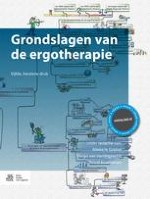Samenvatting
In dit hoofdstuk wordt beschreven hoe het CMOP-E zich in de laatste decennia heeft ontwikkeld tot een inhoudsmodel dat gericht is op de uitvoering en/of betrokkenheid in het dagelijks handelen van personen, organisatie en populaties in een omgeving. Het bijbehorende CPPF, beschreven als procesmodel/raamwerk, geeft de cliëntgecentreerde, op dagelijks handelen gerichte, evidence-based ergotherapie-interventie vorm. In het CPPF staat in acht actiepunten de samenwerking met de cliënt centraal binnen de directe praktijkcontext en de grotere maatschappelijke context. Beschreven wordt ook de Fit Chart waarin de fit tussen de persoon, het handelen en de omgeving gevisualiseerd wordt.
